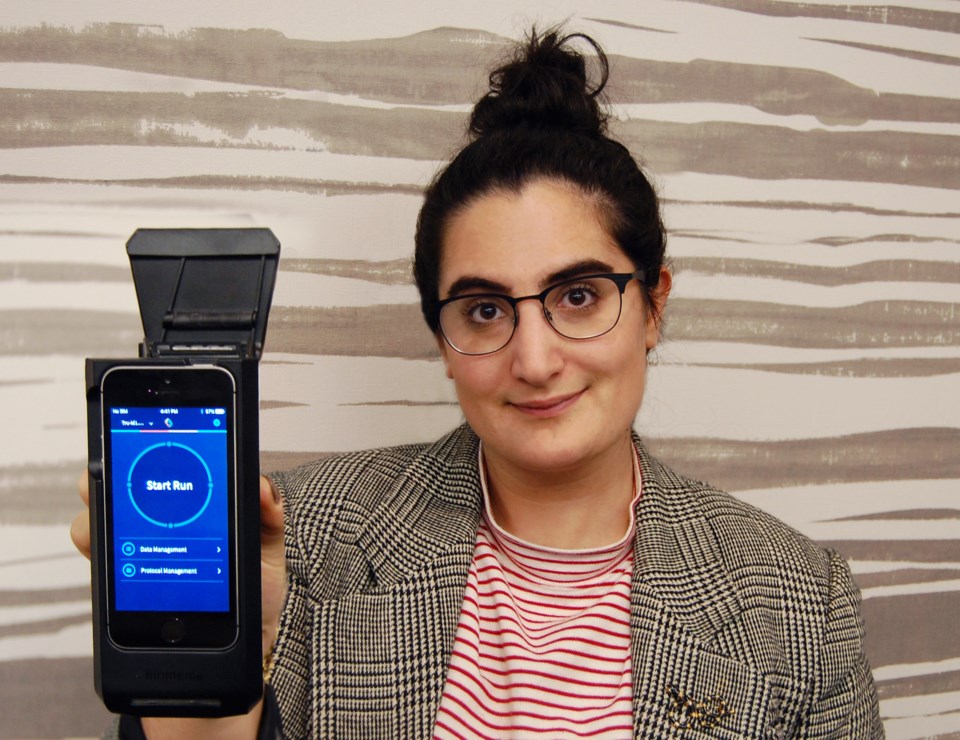Researchers are a step closer to having a portable, hand-held device that can read DNA and positively identify species in the field. The device is already being used to try to reduce food fraud, which costs consumers millions of dollars a year and can compromise their health.
At the Building Canada sesquicentennial lecture series in Guelph last week, Dr. Amanda Naaum, senior research scientist with the new University of Guelph spin-off company TRU-ID, demonstrated how the portable device she’s working with can give users a yes-or-no reading for samples of species whose DNA sequences have been recorded in the University’s Barcode Of Life Database (BOLD).
The database contains the barcodes or gene sequences for 500,000 species. It’s been assembled over the past 15 years as part of an international effort to barcode all species on the planet, led by the groundbreaking research and development of Guelph’s Prof. Paul Hebert.
In 2003, Hebert proposed DNA barcoding as a way to identify species. It uses a very short genetic sequence from a standard part of the genome, the way a supermarket scanner distinguishes products using the black stripes of the Universal Product Code.
Currently, fish are the focus of Naaum’s work. She’s helping retailers and distributors try to prevent mislabelling, which is rampant in the sector.
Naaum’s colleague Prof. Bob Hanner says research by the Biodiversity Institute of Ontario at the university shows about one-quarter of all fish is mislabeled. It was Hanner and his team who likewise found high levels of meat mislabelling in store products they analyzed in the lab this fall.
Naaum says onsite analysis with portable technology like the BioMeme two3 molecular diagnostic device she’s using holds great promise. With just one swab from a sample (fish, in this case), she can collect enough cells to run a real-time PCR analysis onsite, using a smart phone app as an interface.
The app contains species-specific test information. Naaum designs tests that search for a specific region of DNA — an even smaller portion of the DNA barcode —qq that is unique to the target species. It generates fluorescence if that species is present, using sequences from BOLD as a reference.
If that DNA is absent, no fluorescence is generated. That means the sample is not a match.
In this way, samples can be rapidly screened to determine if they are the species that they are supposed to be, or if they contain certain contaminant species, all in under two hours.
These tests can be easily run by non-experts using simple kits that have all of the materials and instructions for identifying a specific species of fish from DNA extraction to interpret results.
“DNA sequencing in the lab is powerful, but doesn’t provide actionable information in real time,” says Hanner. “While more limited in its scope of application, the handheld platform addresses this challenge to meet the needs of industry and regulators.”
Naaum says food retailers could use the device onsite in their distribution warehouses to make sure the food shipments they get in are authentic, before they’re packaged for the public. Or, in the case of fish, inspectors could take it dockside to test if labelling is accurate, before imports get repackaged and shipped widely.
TRU-ID is also expanding onsite testing for meat, natural health products and spices, other areas where mislabelling have been found.
